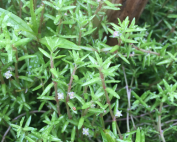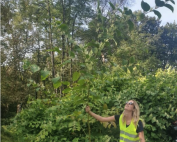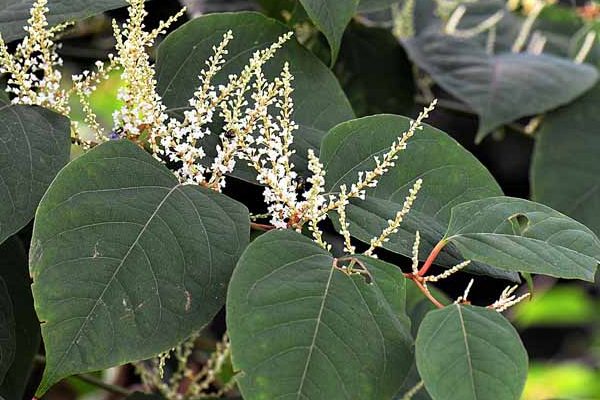
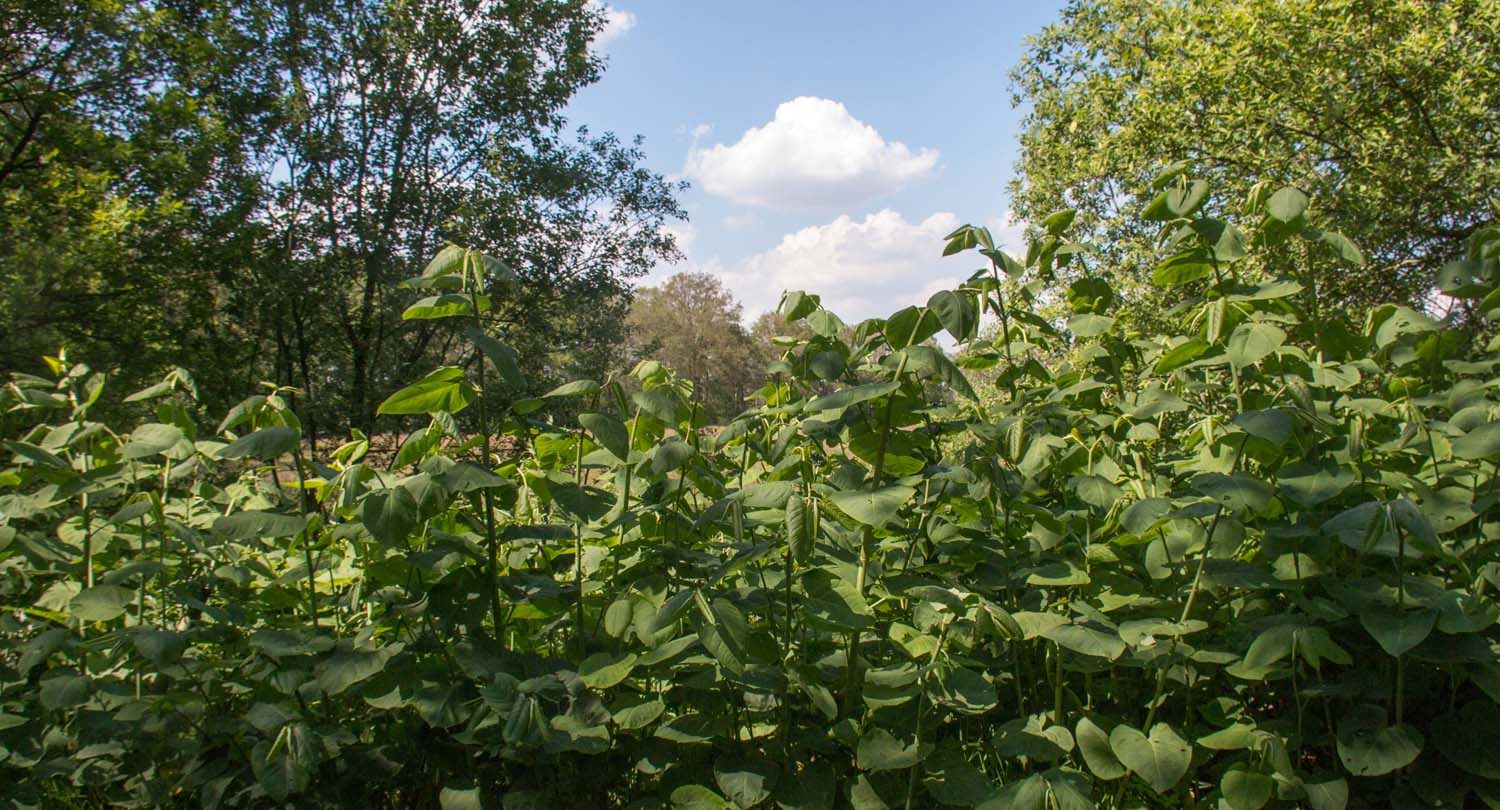
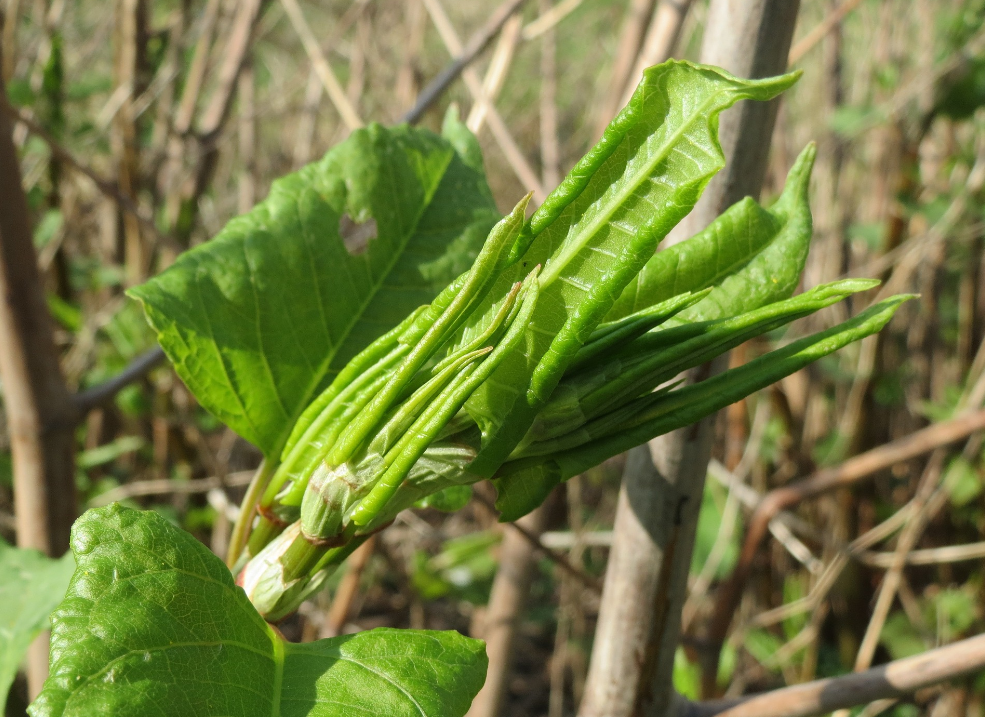
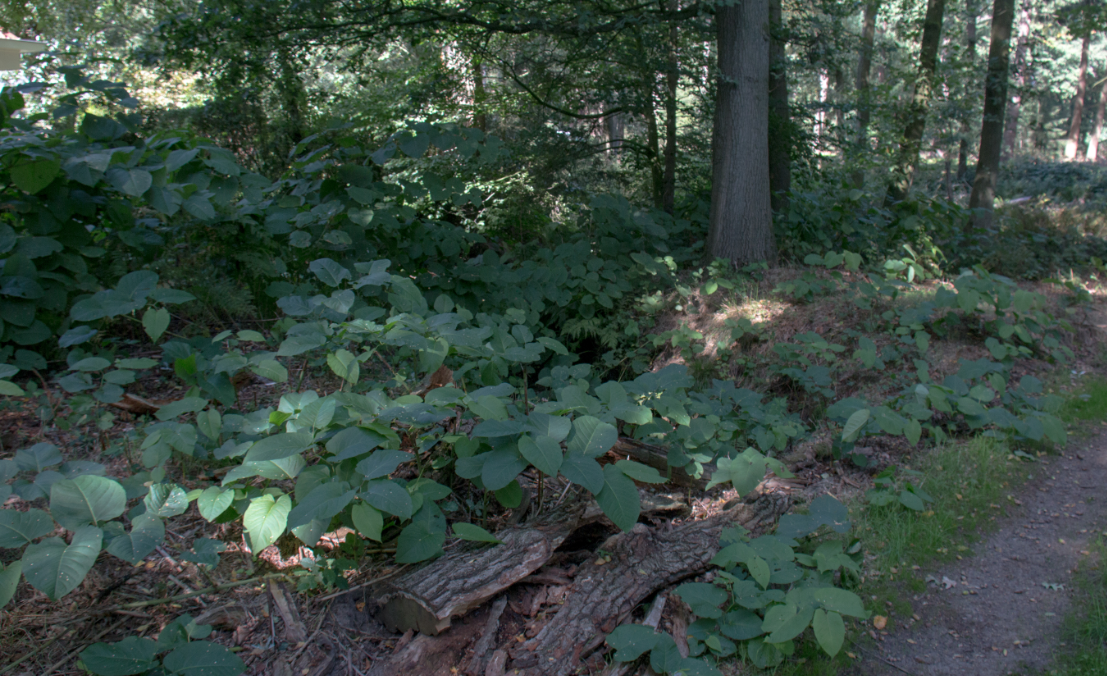
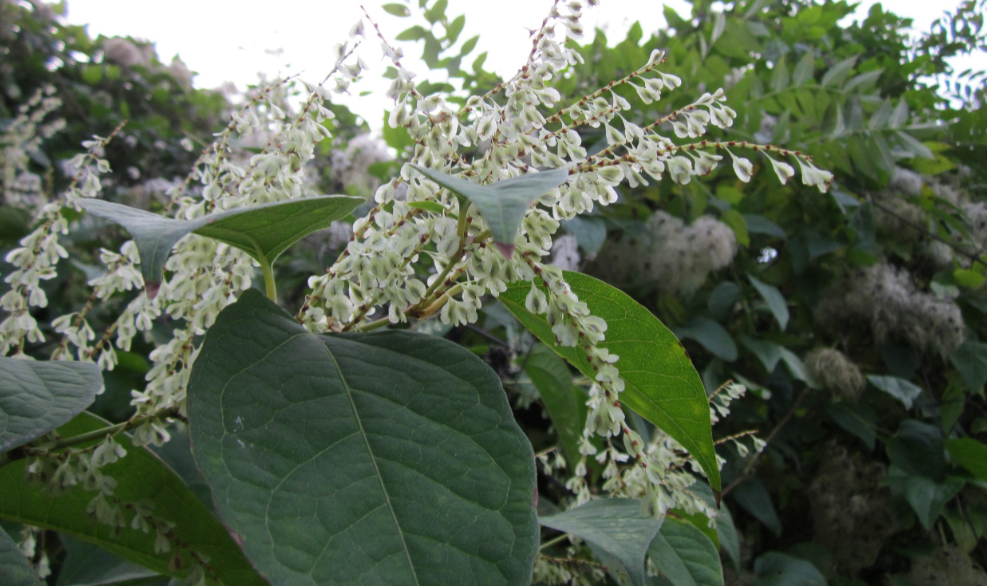
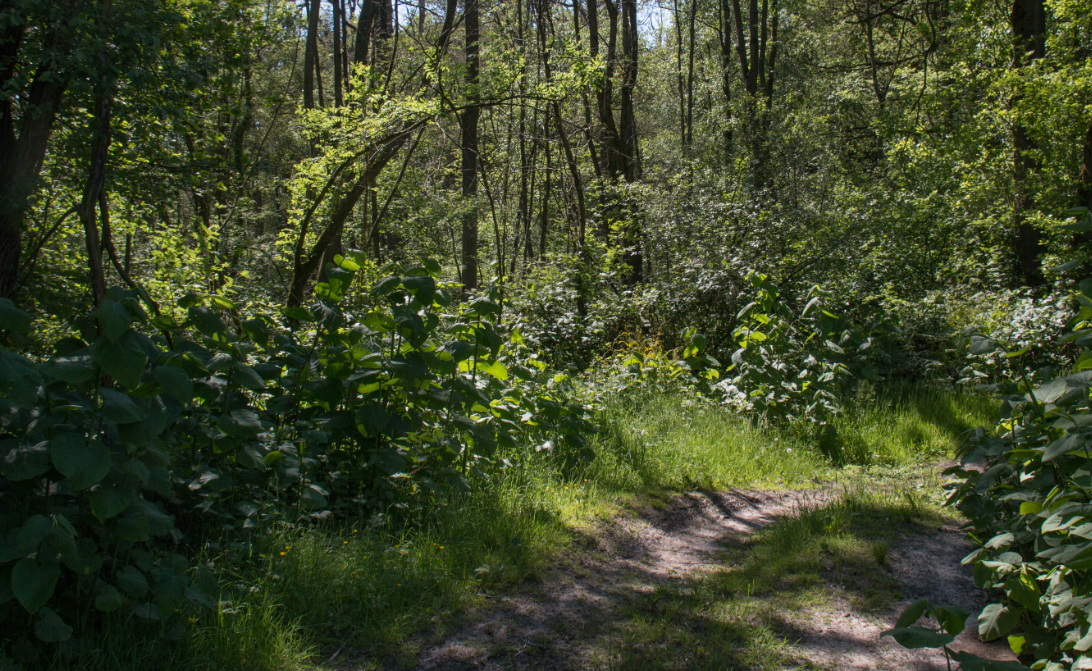
Asian knotweed – Fallopia spp.
How to deal with this invasive weed by exploiting its weak spot
There are several species of Asian knotweeds with invasive characteristics in Europe. In LIFE Resilias we will mostly be working with Japanese knotweed (fallopia Japonica) also known by its synonyms reynoutria Japonica and polygonum cuspidatum.
Dutch: Japanse duizendknoop
Français: Renouée du Japon
Deutsch: Japanischer Staudenknöterich
Ecosystem resilience approach Japanese knotweed
In order to counter the invasiveness of Japanese knotweed, LIFE Resilias uses native species. To create a good starting point, it is important to dig out the rhizomes as much as possible. This is followed by a process of aftercare, after which we start planting native tree and shrub species and disperse seed mixtures. These native species, like brambles (Rubus spp.), are given every opportunity to compete with Japanese knotweed.
Botanical description
Japanese knotweed is a plant of the knotweed family (polygonaceae). The plant is native to Japan spreads and grows extensively in other parts of the world. The IUCN lists Japanese knotweed as one of the hundred most invasive species of the world.
Characteristics
Japanese knotweed is a deep-rooting, highly invasive perennial plant with long hollow stems, it grows 0.5-3 m in height with side branches and 5-12 cm long leaves. The plant forms sturdy rhizomes, which contain the polyphenol Resveratrol. In the winter, the aboveground biomass of the plant dies. In March and April, the stems emerge from the ground relatively quickly, among which are the withered stems of the previous year. They develop light green leaves at regular intervals on the stem. On the middle vein of the back of the leaf are scaly hairs. At the base of the leaf stalk is a large, elongated honeycomb. The young stem is quite pliable, later it becomes thicker and gets some red spots. The plants grow without support and can become very tall. The stem is made up of hollow stem segments or internodes, which are also seen in bamboo. At the border between two of these, there is a node on which a side branch and a leaf are located. The side branches are also built up in this way. The wall of the stem consists of two parts. A thick part that is green which provides the firmness, and a transparent membrane with red spots. Together, the stem looks green with red spots. The plant flowers in August and September with creamy white, sometimes white-pink, flowers. The spouts in the inflorescence are almost bare and rounded or short-tapered. The fruits are reddish and have a membranous edge, or wing, around them. The plant grows in groups on nutrient-rich moist soil, such as along streams and on riverbanks. It tolerates shade but prefers the sunny spots.
Asian knotweed – Fallopia spp.
How to deal with this invasive weed by exploiting its weak spot
There are several species of Asian knotweeds with invasive characteristics in Europe. In LIFE Resilias we will mostly be working with Japanese knotweed (fallopia Japonica) also known by its synonyms reynoutria Japonica and polygonum cuspidatum.
Dutch: Japanse duizendknoop
Français: Renouée du Japon
Deutsch: Japanischer Staudenknöterich
Ecosystem resilience approach Japanese knotweed
In order to counter the invasiveness of Japanese knotweed, LIFE Resilias uses native species. To create a good starting point, it is important to dig out the rhizomes as much as possible. This is followed by a process of aftercare, after which we start planting native tree and shrub species and disperse seed mixtures. These native species, like brambles (Rubus spp.), are given every opportunity to compete with Japanese knotweed.
Botanical description
Japanese knotweed is a plant of the knotweed family (polygonaceae). The plant is native to Japan spreads and grows extensively in other parts of the world. The IUCN lists Japanese knotweed as one of the hundred most invasive species of the world.
Characteristics
Japanese knotweed is a deep-rooting, highly invasive perennial plant with long hollow stems, it grows 0.5-3 m in height with side branches and 5-12 cm long leaves. The plant forms sturdy rhizomes, which contain the polyphenol Resveratrol. In the winter, the aboveground biomass of the plant dies. In March and April, the stems emerge from the ground relatively quickly, among which are the withered stems of the previous year. They develop light green leaves at regular intervals on the stem. On the middle vein of the back of the leaf are scaly hairs. At the base of the leaf stalk is a large, elongated honeycomb. The young stem is quite pliable, later it becomes thicker and gets some red spots. The plants grow without support and can become very tall. The stem is made up of hollow stem segments or internodes, which are also seen in bamboo. At the border between two of these, there is a node on which a side branch and a leaf are located. The side branches are also built up in this way. The wall of the stem consists of two parts. A thick part that is green which provides the firmness, and a transparent membrane with red spots. Together, the stem looks green with red spots. The plant flowers in August and September with creamy white, sometimes white-pink, flowers. The spouts in the inflorescence are almost bare and rounded or short-tapered. The fruits are reddish and have a membranous edge, or wing, around them. The plant grows in groups on nutrient-rich moist soil, such as along streams and on riverbanks. It tolerates shade but prefers the sunny spots.






Latest news
Experiences with tackling knotweed in stream valleys
Rob van der Burg is an ecologist at Bosgroep Zuid Nederland and co-responsible for implementing, monitoring and evaluating the ecosystem approach to [...]
ICAIS symposium
This week the ICAIS symposium takes place in Halifax, Canada. This symposium focuses on the latest scientific knowledge surrounding aquatic invasive exotic species. Experts [...]
Interesting developments in the ecosystem approach to Japanese knotweed
On roadsides, things seem to be going in the right direction with the ecosystem approach to Japanese knotweed. Since 2021, Janneke van der [...]



